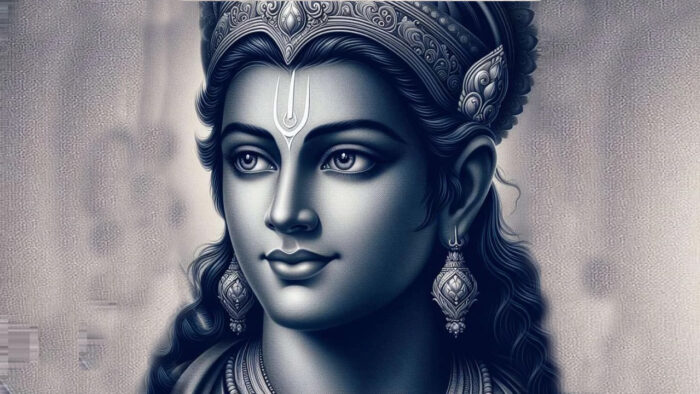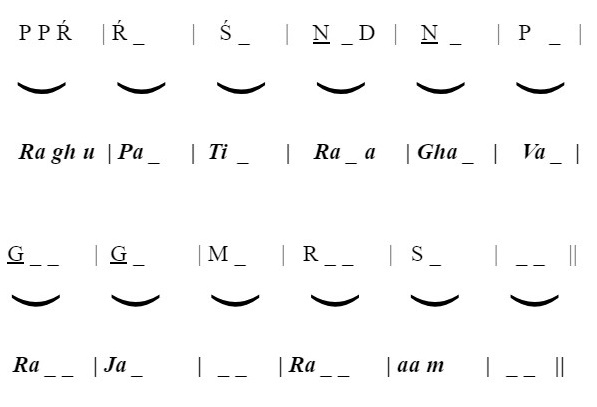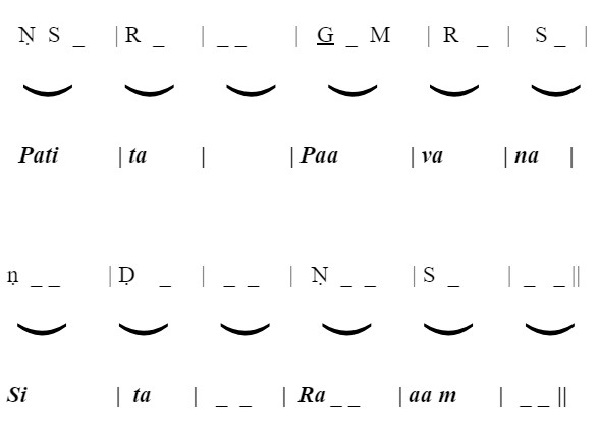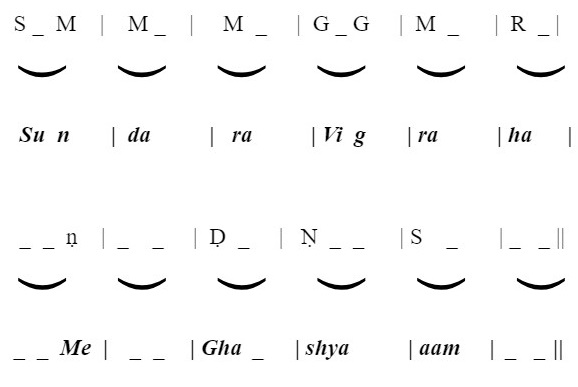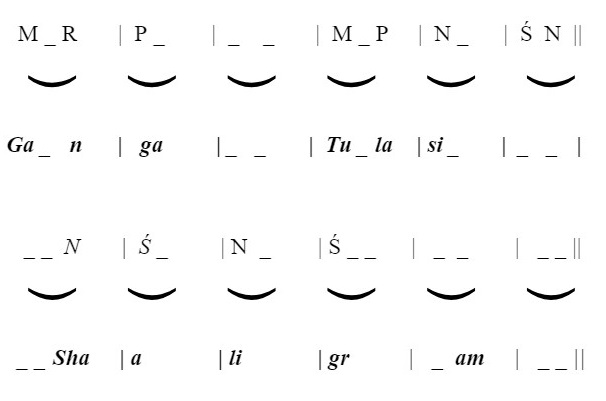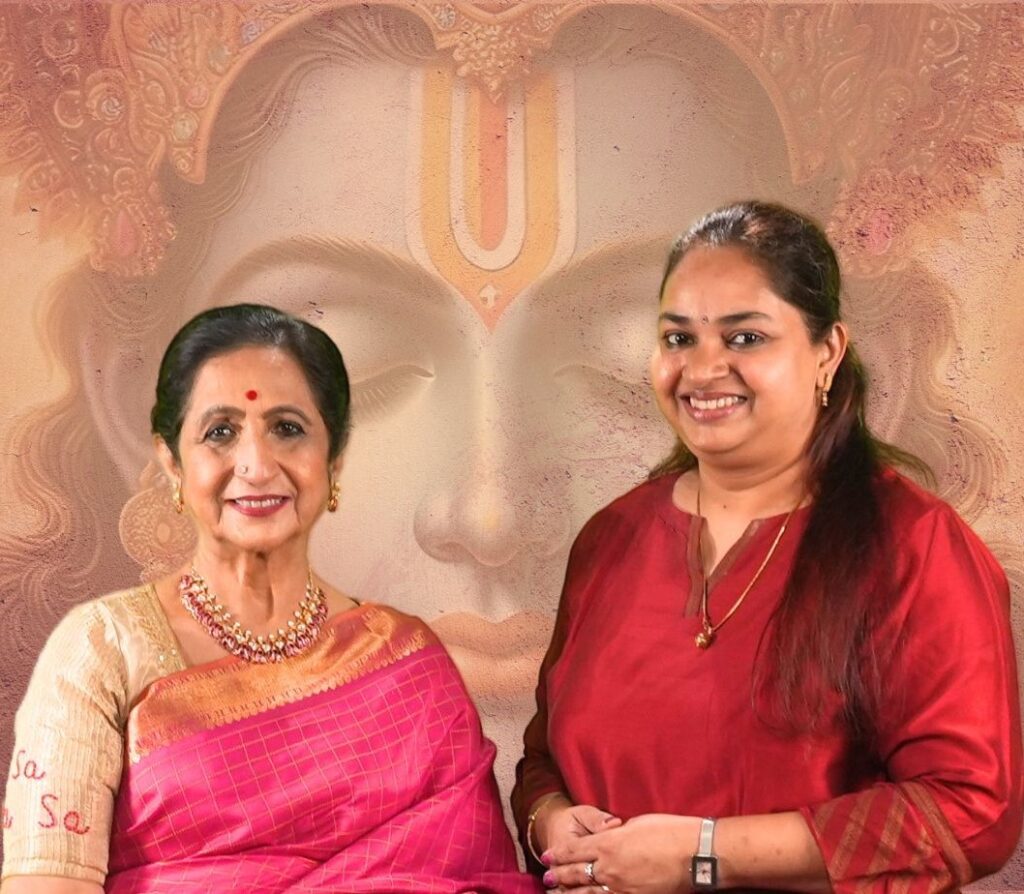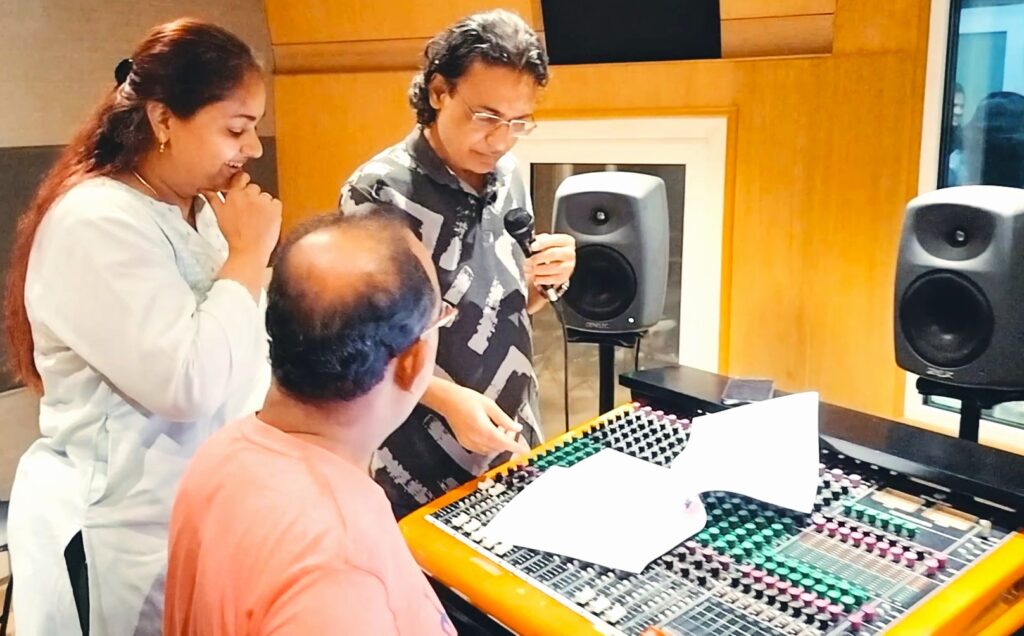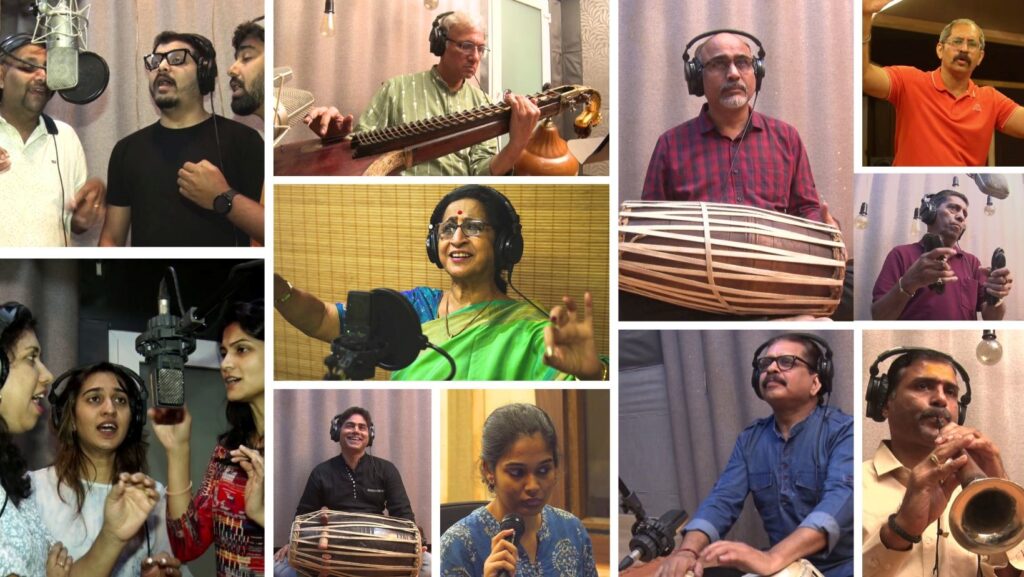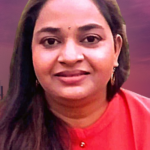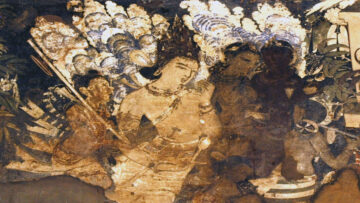(This article is an account of my personal thought process, research, and journey in giving a new form and tune to the popular bhajan Raghupati Rāghava Rājā Rāma as music director/composer.)
रघुपति राघव राजा राम पतित पावन सीता राम
Raghupati Rāghava Rājā Rāma Patita Pāvana Sītā Rāma
These lines evoke a ton of memories in my mind, primarily of my grandparents who were a part of the freedom struggle while also recalling the musicians I’ve heard singing the song.
A few years ago, during a casual surfing of blogs on the internet, a flash of the below mentioned lines were ascribed as the ‘original lyrics’ of this popular bhajan.
सुंदरविग्रहमेघश्याम, गंगा तुलसीशालिग्राम, भद्रगिरीश्वरसीताराम, भक्तजनप्रियसीताराम, जानकीरमणसीताराम, जय जय राघवसीताराम।
SuṃdaraVigrahaMeghaśyāma, Gaṃgā TulasīŚāligrāma, BhadraGirīśvaraSītārāma, BhaktaJanapriyaSītārāma, JānakīRamaṇaSītārāma, Jaya JayaRāghavaSītārāma।
Were these really the original lyrics? What about the words that we were singing all these years? When I closed my eyes, my imagination took me right into the sanctum of a cave-like temple and the divine Sri Rama appeared. Such beautiful lines, I could envision the idol of Sri Rama just as it is described.
The birth of ‘my version’ and vision of this song happened on July 26, 2020. After an intensive music class in RaagMiyaMalhar with my teacher, Dr. Divya Dayal, my mind was absorbing the notes in the lakshangeet by Gunijan (Pandit C. R. Vyas). The hugely popular Bole Re Papihara composed by Vasant Desai and sung by Vani Jairam (Padma Bhushan awardee) with graceful and regal notes also came floating into my mind.
Thoughts transposed. What if Raghupati Raghava was in MiyaMalhar? I found a quiet corner at home, played the tanpura and meditated: How does one open that song, in this raga, with the right notes? What are the visuals that the words Raghupati Raghava inspire?
In my mind I could see Sri Rama returning to Ayodhya and thousands of people standing and watching, chanting, and singing his praises, sobbing, cheering, and welcoming him with showers of flowers and garlands. Some are stunned, some regretful, some filled with pride, and some in pure surrender.
The 7-beat Rupaktaal goes very well with His majestic gait and regal bearing while the crowds receive him. Dancers take a step at a time to lead Him to the palace gates of Ayodhya, in a traditional patrapravesham style. The most adorable notes of the raga were the Darbari ‘ga’. He is finally returning home.
Sita and Lakshmana follow Him, so my notes flow with them too. There would be an air of respect for them having survived the 14 year-long exile and battle, and an overwhelming feeling of gratitude that the worst is over.
What a moment of historic importance! Astonishing that we took Sri Rama’s presence or rather absence in Ayodhya for granted!
I visualized the number of devotees who were waiting all their lives for just one glance of the pristine deity and the beautiful temple in Ayodhya! Why did we deprive ourselves of that? Should we just look at the Rama within us and be happy that he is there?
SuṃdaraVigrahaMeghaśyāma
In 2005 while we were visiting Lucknow, my friend suggested that we have a darśana of the Ram Lalla temple in Ayodhya. Escorted by a police official, we walked through the enclosure amidst the rubble to the tent.
What unimaginable fortune that day brought us! We walked slowly into what seemed like a cave and suddenly Ram Lalla was in front of us. The pandit chanted a prayer and lit the āratī lamp for us. What just happened? Were we really at Ram Mandir in Ayodhya? This experience left me stunned.
Thoughts came back to the line: SuṃdaraVigrahaMeghaśyāma
The idol we saw in Ayodhya was Ram Lalla. That does not match with Meghaśyāma. I closed my eyes. I imagined the dark stone idols I had seen in the temples in Tamil Nadu. Our country is so rich in its grandeur, architecture, culture, history, temples, music, dance, art!
As I was humming RaagMiyaMalhar, I found that apart from RaagDarbari, there were strains of Raag Des, Sarang, Durga… is there a bit of Jaijaiwanti in this raga? I took a long pause. I went back to the lakshangeet and revised the notes. Though there are shades of many ragas within Malhar, it has its very own distinct approach to the notes.
Unbelievably, I realized that I am de-constructing the well-known Raghupati Raghava Raja Ram. But how can I ignore these beautiful ‘original lyrics’? It deserves every right to be known and celebrated in its own unique way.
I have found myself falling for the combination of the Rupak (mishram) 7/8 taal with the adhha 2/4 or 4/4 taal which I had also used in a prior composition of mine called ‘Jai Jai Krishna’ (from my debut album ‘Krisnaruupa’) which features the 108 names of Krishna in a unique presentation.
When BhadraGirishwaraSita Ram fell into that 2/4 beat, it was almost like everyone could sing along in a chorus by saying Raghupati Raghava Raja Ram. So, the rest of the lines followed BhaktaJanapriyaSita Ram (RaghupatiRaghava Raja Ram). JanakiRamanaSita Ram (RaghupatiRaghava Raja Ram) and Jaya JayaRaghavaSita Ram (RaghupatiRaghava Raja Ram).
Now that I completed tuning the six lines of the ‘original lyrics’, it was a song which had a raga and a good form. I shared the first tune with my teacher, my husband and my mother. My teacher replied. “It’s good Ruupa… and the best thing is that you have maintained the raga throughout… देखो, तुम्हारे मल्हार से बारिश हो रही है (dekho, tumhāre malhāra se bāriśa ho rahī hai )”. It had indeed started raining; only it was monsoon in Mumbai so no need to take it so seriously.
A series of health issues for two years after the pandemic had me at wits end. Once, as I sat on the hospital bed, I composed a few lines of a ghazal in Madhuvanti but had forgotten about my song in MiyaMalhar. It was mid 2023 when news was warming up about the upcoming Ayodhya Ram Mandir and Sri Ram Lalla idol consecration in January 2024. This spiked my inspiration and hastened my efforts.
Aruna Sairam (Padma Shri Awardee) the renowned Indian classical Carnatic music legend, was the voice that came to my mind. I sent her an email with all the details of my research about the song. The very next day I found myself singing the song to her over a video call. To my total surprise, she gladly accepted and suggested I try to expand and include more verses.
(Figure 1: Ruupa Raaman with Aruna Sairam)
As far as my research goes, I had already traced every online article about Raghupati Raghava and the original lyrics. I accessed a private Google group discussing this subject. Someone suggested that the words Raghupati Rāghava Rājā Rāma Patita Pāvana Sītā Rāma was most probably from the Ramcharitamanas of Tulsidas which I checked but could not find these words there.
One of the oldest renditions I remember is that of Pt. Vishnu Digambar Paluskar from an LP record. It was he who had tuned these two lines and he would sing them for the crowds when he accompanied Gandhiji in his public gatherings. It became popular and was always associated with the Sabarmati Ashram’s devotional songs.
These two lines, I discovered, were the last two lines in the Mangalam section of the Nama Ramayana, a 108-line poem on the Ramayana by 17th century poet ShriLakshmanacharya. The poem is divided into seven kandams (chapters) and each line depicts one story.
None of the Nama Ramayana e-books I looked up had these two lines or the Mangalam. My research did not stop there. I had traced all the links and articles and blogs, songs and videos that had the Nama Ramayana. At last, I came across a website containing not just the text of the 108-line Nama Ramayana poem but also the Mangalamat the end. This Mangalam section ended with these two concluding lines: Raghupati Rāghava Rājā Rāma Patita Pāvana Sītā Rāma. Wow!
I also listened to renditions of the Nama Ramayana. Some did not have the Mangalam but there was one by Gurucharanatirtha Subrahmaniam on the internet archive who had sung the whole Nama Ramayana along with the Mangalam.
Now that the first two lines had been traced, I searched feverishly for the six original lines (SundaraVigraha…) in the Nama Ramayana. It was not there. But those lines had already inspired my thoughts so deeply that I decided to stop looking and figure out how to expand my song further.
How can I add new lines to the ‘original lyrics’ and make it authentic? I thought the best way would be to tie it back to ShriLakshmanacharya’s poem itself. So I selected two lines from the Nama Ramayana.
श्रीमद् दशरथ नंदन राम, श्रीमद् अयोध्या पालक राम
Śrīmad Daśaratha Nandana Rāma, Śrīmad Ayodhyā Pālaka Rāma
I looked further and I found this line.
सकल जीव संरक्षक राम
Sakala Jīva Saṃrakṣaka Rāma
Wow, now only if I could find another line that resonates with this, it would make it so apt and so relevant to the temple’s inauguration and the journey of 500 years of Indian history’s effort to reinstate Ram Lalla in his rightful home. I picked this next line from the UttaraKandam.
धर्मस्थापना तत्पर राम
Dharmasthāpanā Tatpara Rāma
When I read the lyrics together it seemed right, but my mother pointed out that Hanumanji was missing. The KishkindaKandam had the line:
हनुमत सेवित निजपद राम
Hanumata Sevita Nijapada Rāma
When I placed it in between the other four lines, I was thrilled and could feel the goosebumps. These five lines would make a perfect opening for the song!
There were two more lines that were repeated often and after every Canto/Kandam of the Nama Ramayana and were also intrinsic to some of the renditions that I had listened to.
राम राम जय राजा राम, राम राम जय सीता राम
Rāma Rāma Jaya Rājā Rāma, Rāma Rāma Jaya Sītā Rāma
Surely this felt like justice to me. How auspicious to be able to tie the Raghupati song back to the Nama Ramayana!
I selected two more lines from the Mangalam to conclude the song.
जय जय मंगल सीता राम, मंगलकर जय मंगल राम
Jaya Jaya Maṃgala Sītā Rāma, Maṃgalakara Jaya Maṃgala Rāma
To take things one notch up, I increased the pace of the song and added a Rama chant. The main voice would chant Ram Ram Ram Ram while the chorus would sing Ram Ram Jaya Raja Ram followed by the two lines from the Mangalam. The composition was done.
The next phase involved getting the music and the musicians together. My first sitting was with Atul Raninga, a well-known and respected pianist, programmer, arranger, and musician. Based on our discussions, he laid out the basic tracks with the musical inputs for each instrument. The instruments we chose were specifically mangalavadyams, the SaraswatiVeena, Shehnai, Mridangam, Pakhawaj, conch and cymbals, which are auspicious instruments assigned to temple music.
(Figure 2: Ruupa Raaman at the recording of the song – Raghupati Raaghava with Atul Raninga & Shantanu Mukherjee)
In the first recording session, the percussionists recorded live in the studio. The rhythms were magically set and supervised by the masterly Sridar Parthasarathy. He played the Mridangam, Kanjira and Morsing for the song. He was joined by three super talented artists, Shreedhara Chari (Pakhawaj), Ashish Jha (Tabla) and Deepak Borkar (Percussion). The after-effect of that first session was very intense and I experienced a shift in my energies and my whole body was reverberating. I could barely sleep and I did not know whether to laugh or cry or smile with absolute joy. The following afternoon we were joined by the distinguished instrumentalists, Narayan Mani (Veena) and Yogesh More (Shehnai). A few days later, the chorus group, a brilliant bunch of six artistes led by Umesh Joshi, came in and when they all sang in unison, it felt like a blessing.
Another week later, my husband and I went to Chennai to record Arunaji. We also shot a video the following day with her and she is an absolute delight to work with. My song had finally taken shape. The whole song came together as our immensely experienced recordist and sound engineer Shantanu Mukherjee mixed all the layers of audio tracks into a seamless blend.
As soon as the song got ready, I sat down to edit the video. We had very diligent cameramen shooting every single take in the studio so in the video I was able to showcase each artist performing, literally, take for take. ‘Raghupati Raaghava’ was launched on January 17, 2024.
(Figure 3: Teamwork of talents artists involved in giving shape to the final composition)
Who knew that what I imagined in 2020 while composing this song would actually translate into those very visuals broadcast on television during the historic PranPratishthha ceremony on January 22, 2024! A divinely beautiful idol of Ram Lalla (by sculptor Arun Yogiraj) matched perfectly with the words “SundaraVigrahaMeghashyam” and the thousands of devotees’ present that day expressed the same emotions as I had envisaged!
Tears of joy and an immense satisfaction at having achieved a far-fetched dream.
This song Raghupati Raaghava is not only representative of my roots in music, dance, theatre and culture that I grew up on but also a modest ode on behalf of all the patriotic and artistic ancestors and members of my family, to the evolving generations and enterprising citizens of an emerging and progressive Bharata.
Jai Shree Ram!
Feature Image Credit: theproudhindu.com
Watch the video of Raghupati Raaghava Song
Disclaimer: The opinions expressed in this article belong to the author. Indic Today is neither responsible nor liable for the accuracy, completeness, suitability, or validity of any information in the article.

